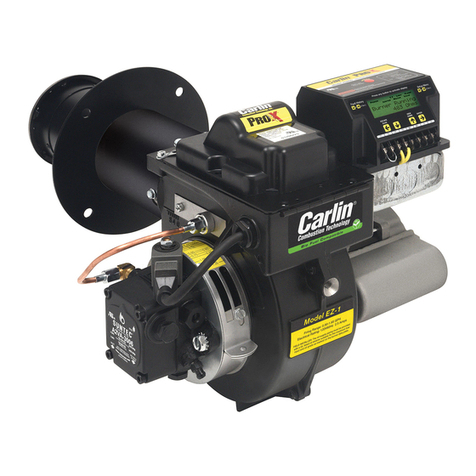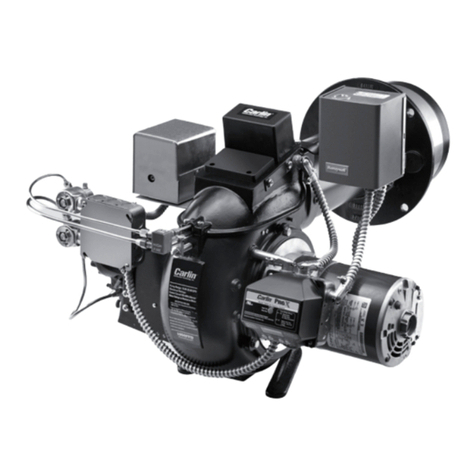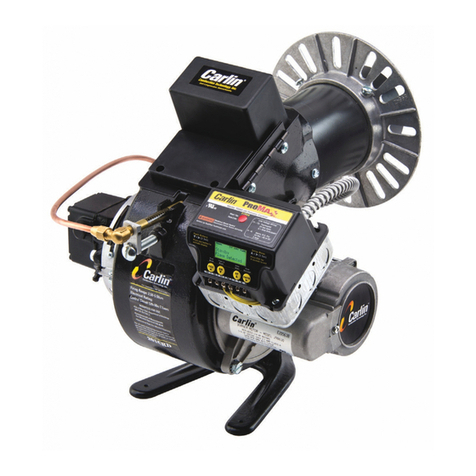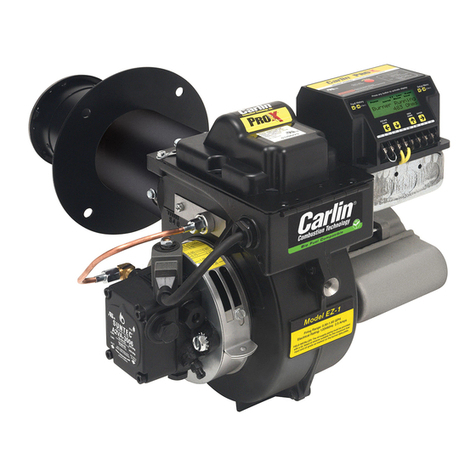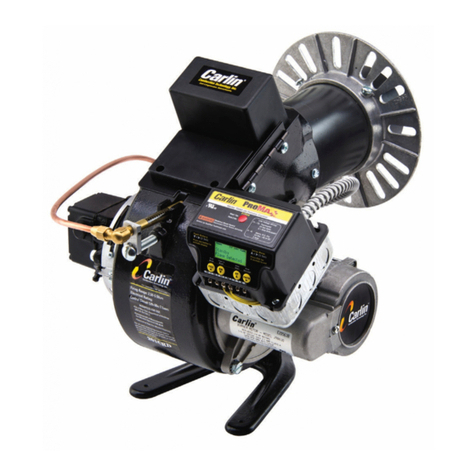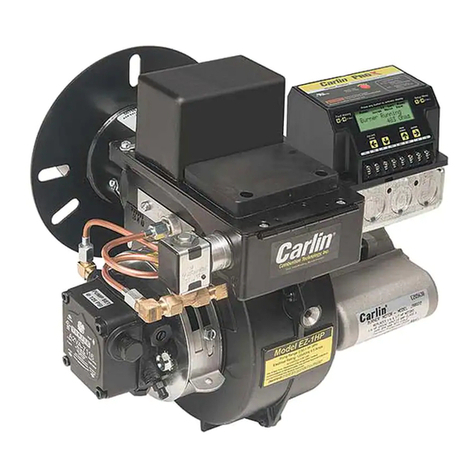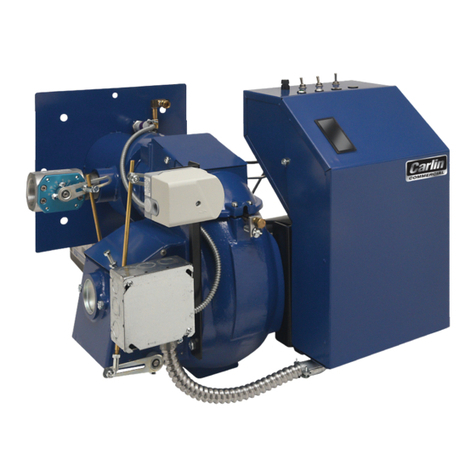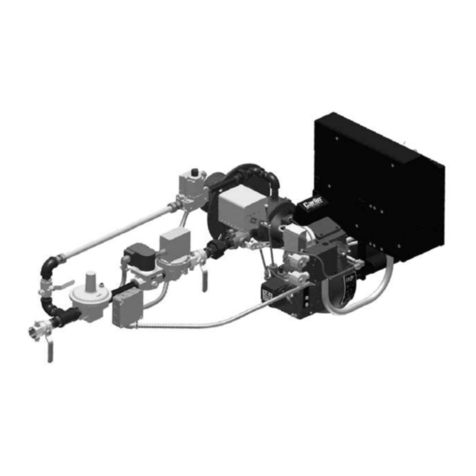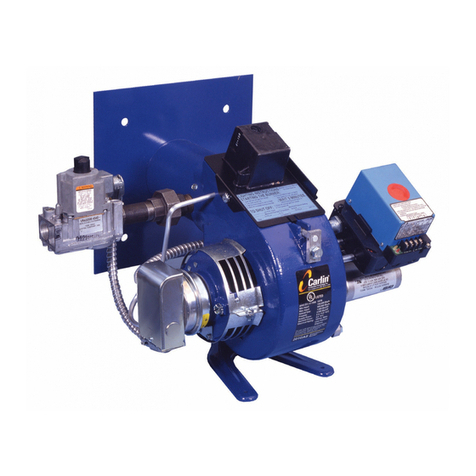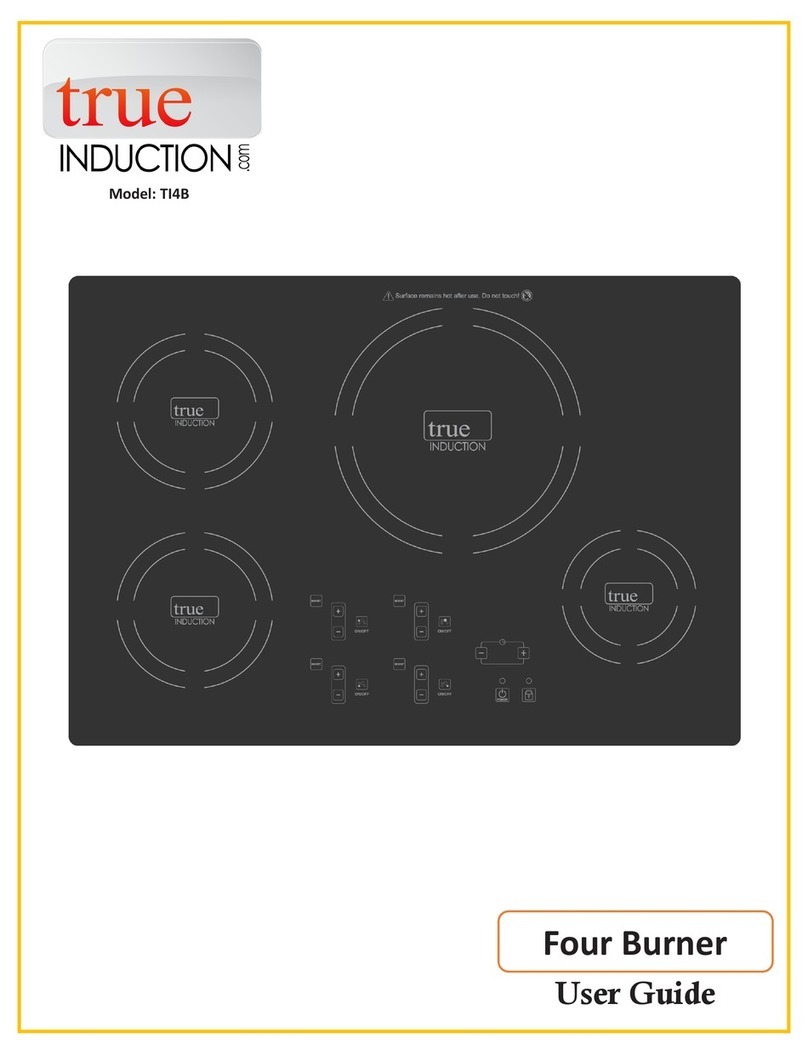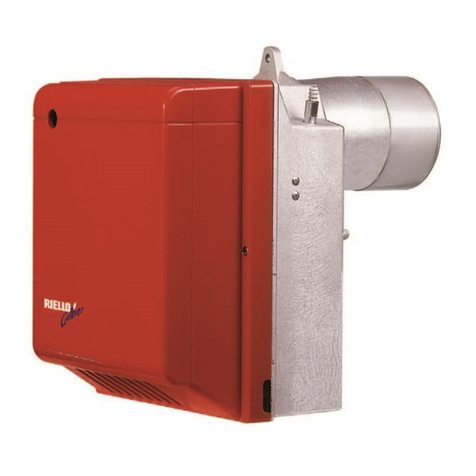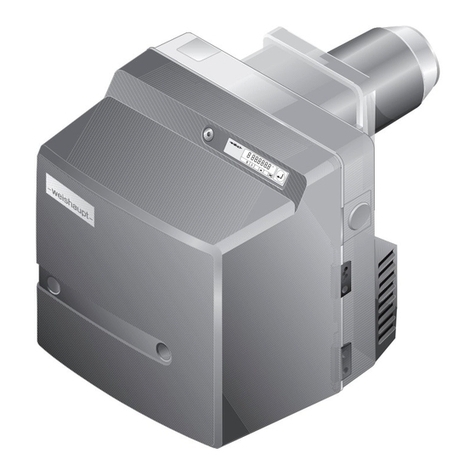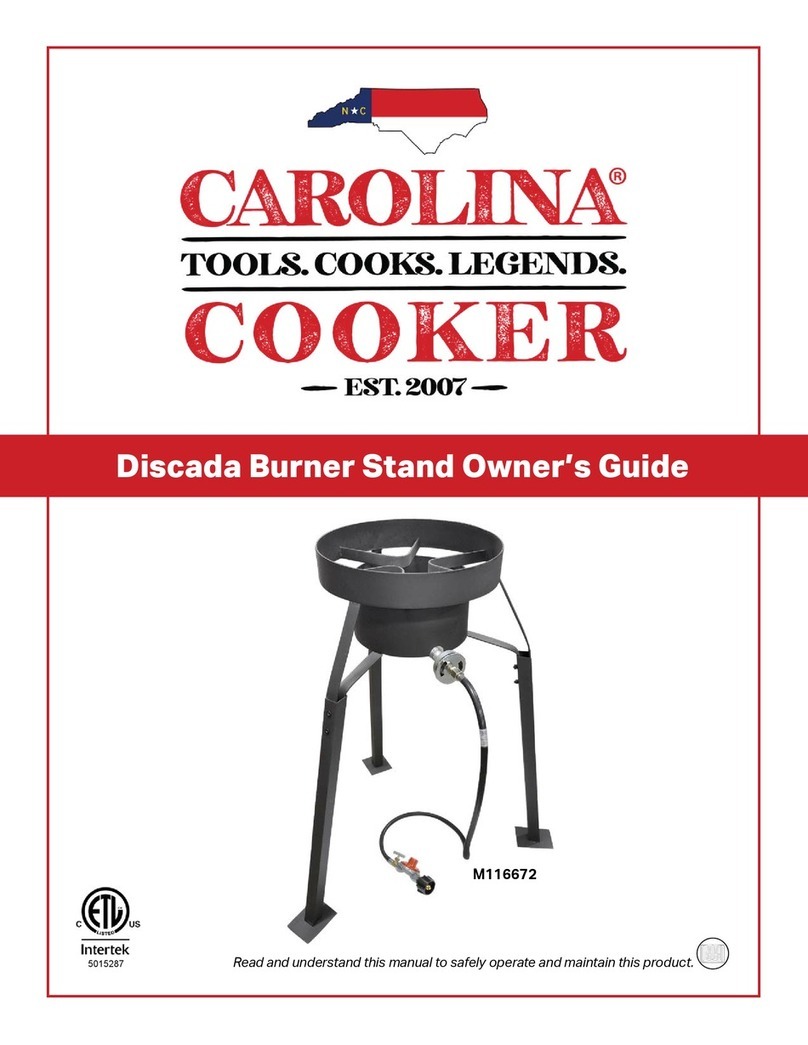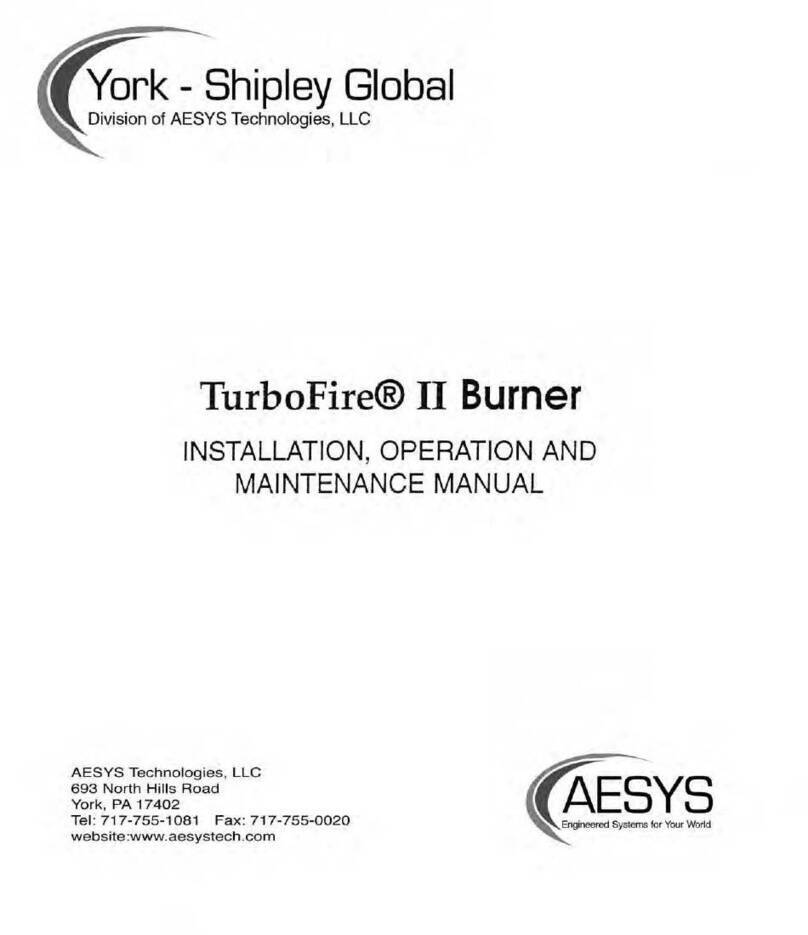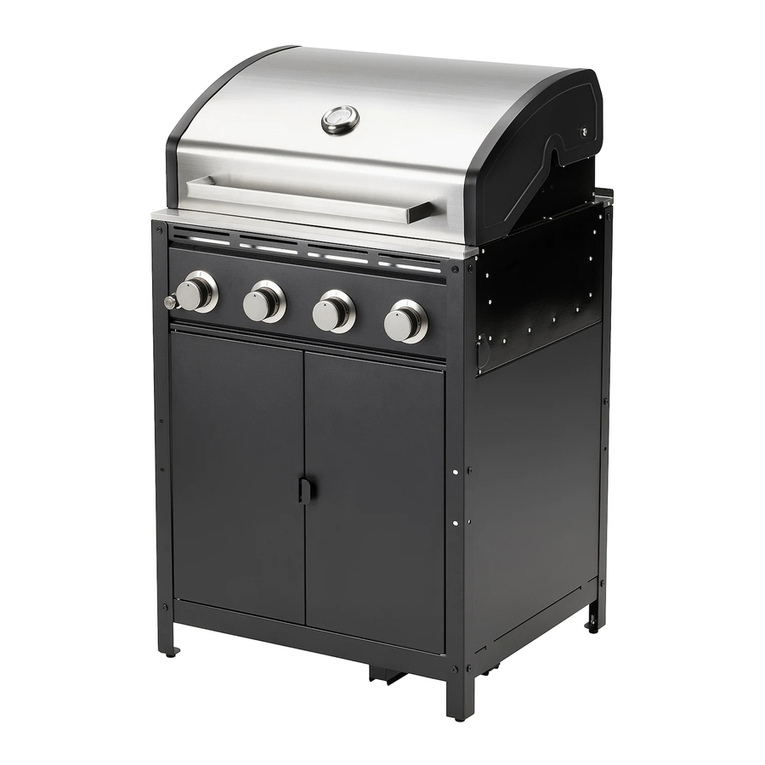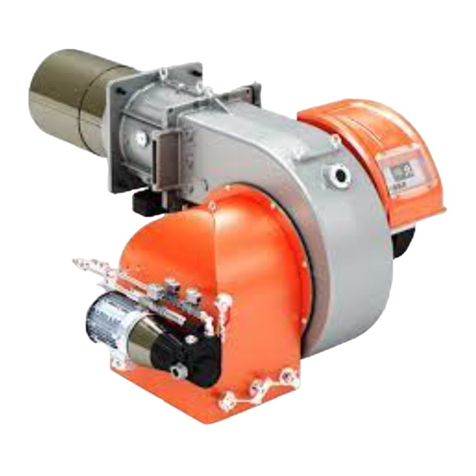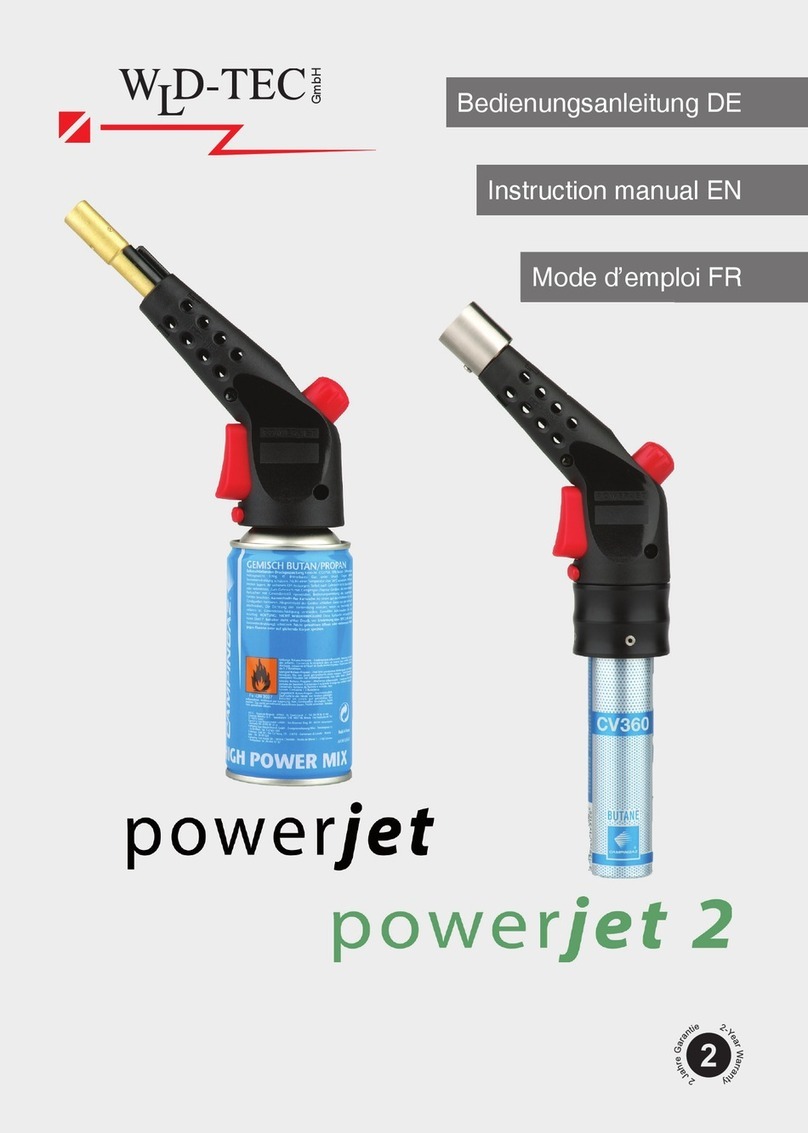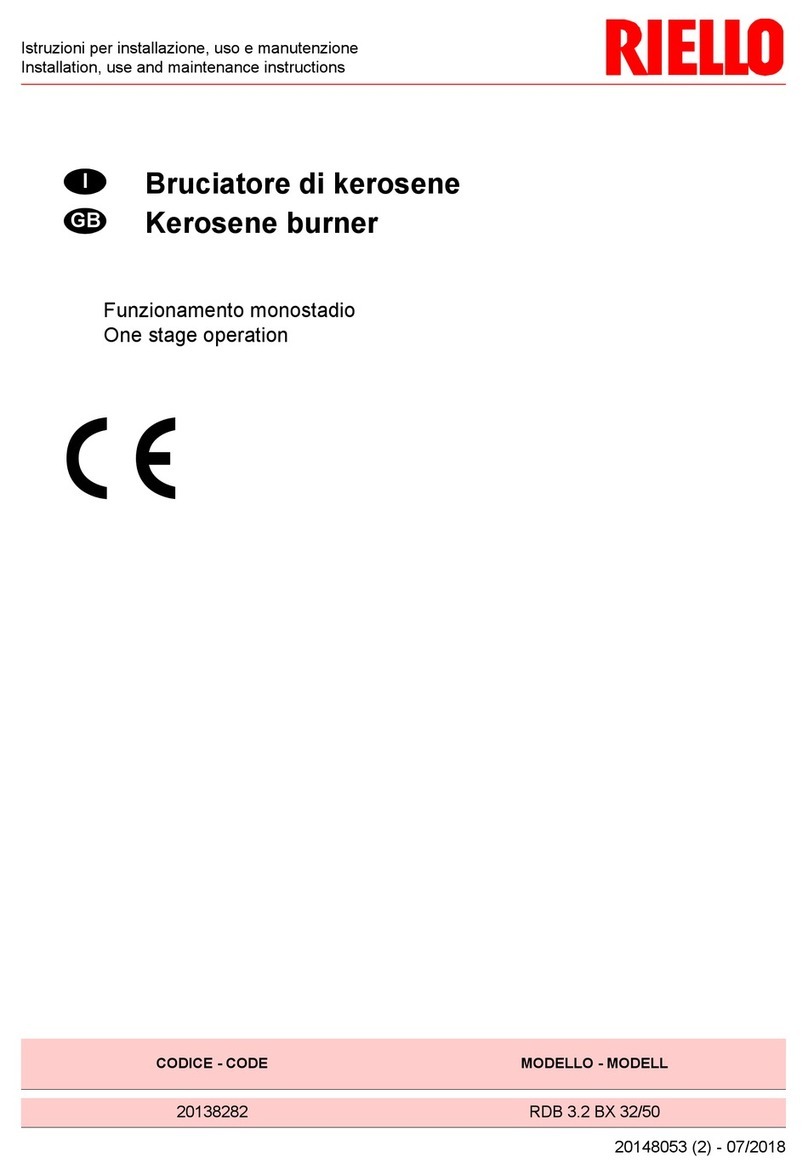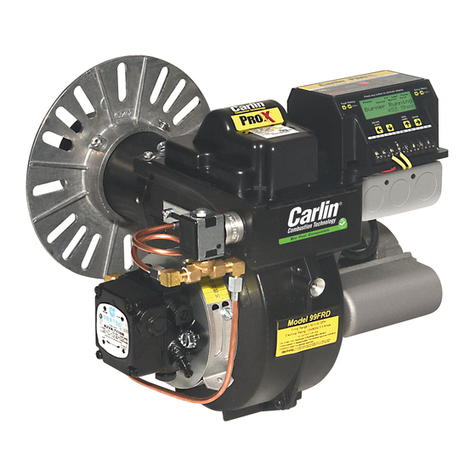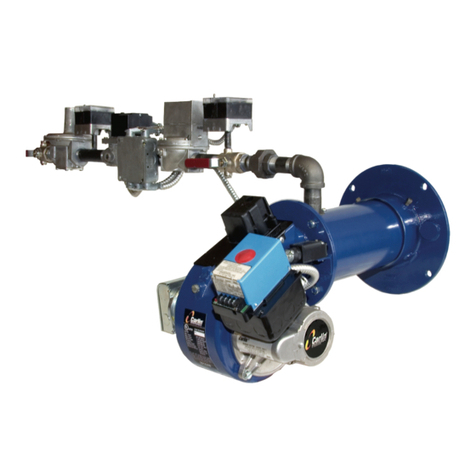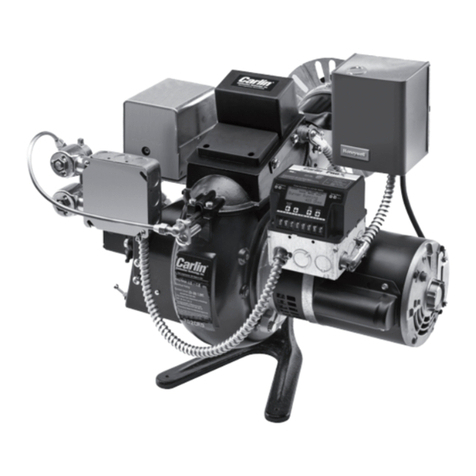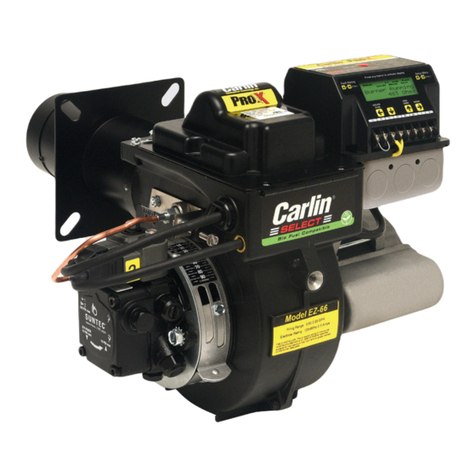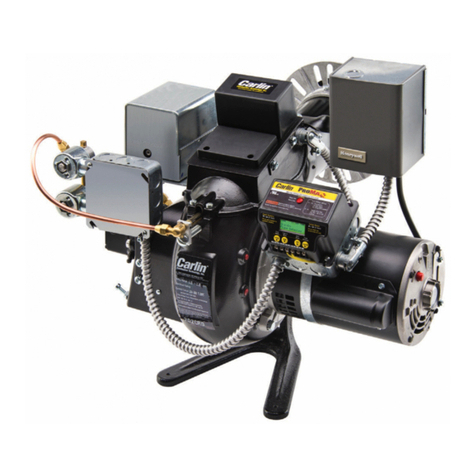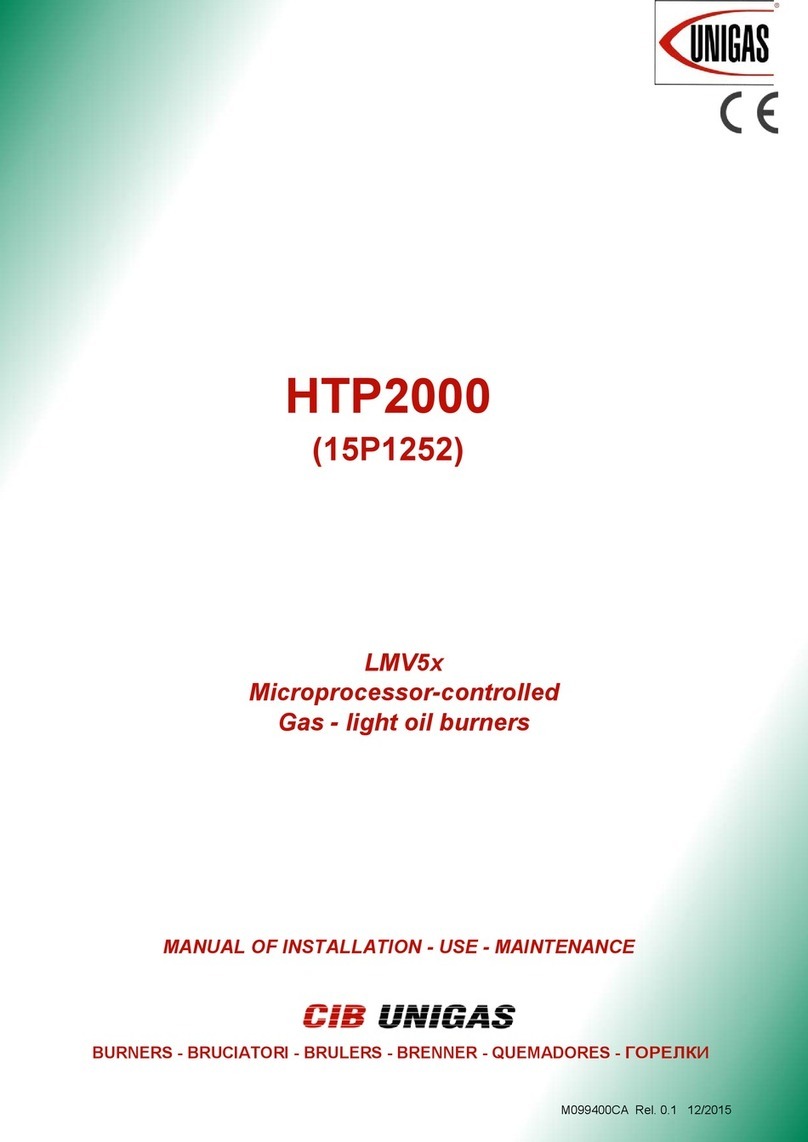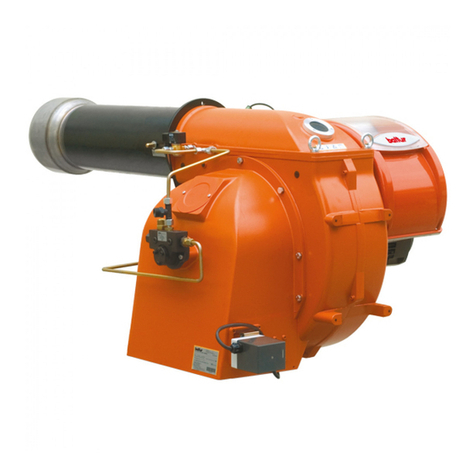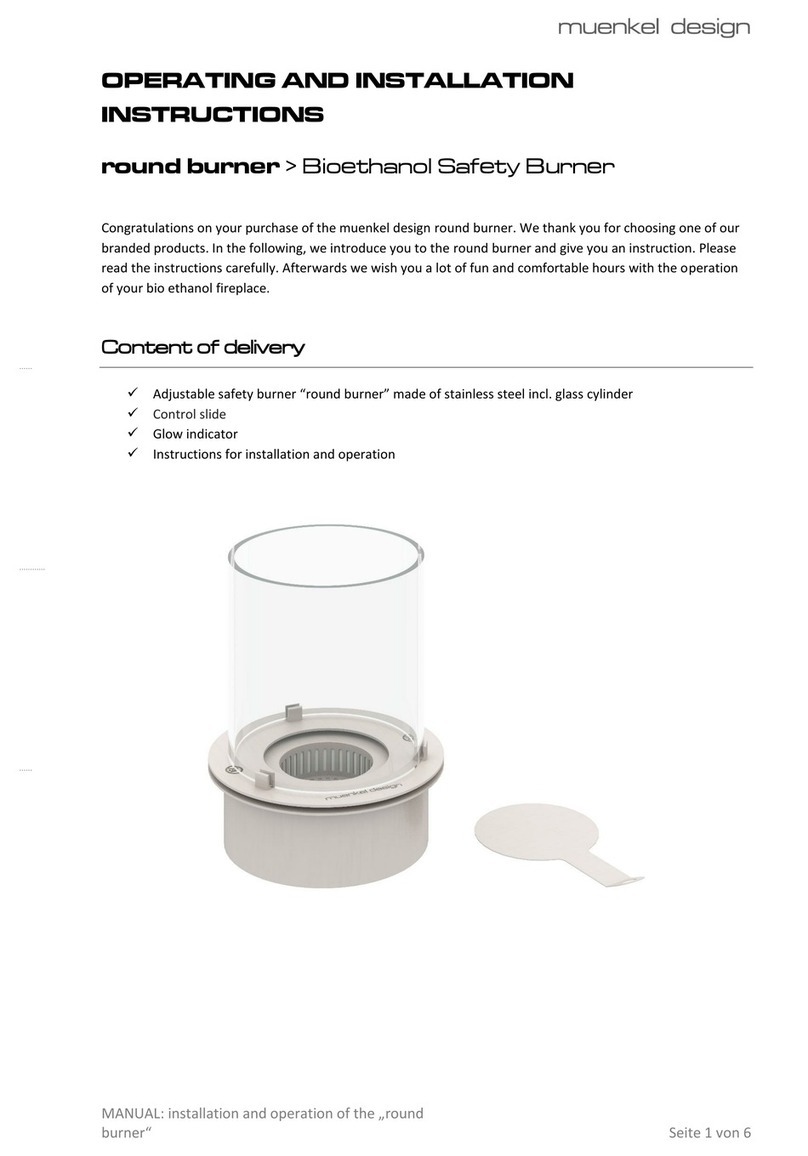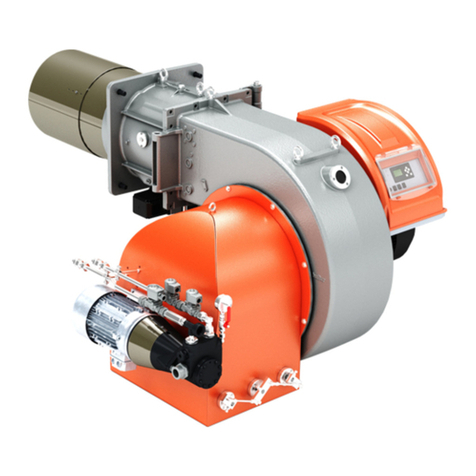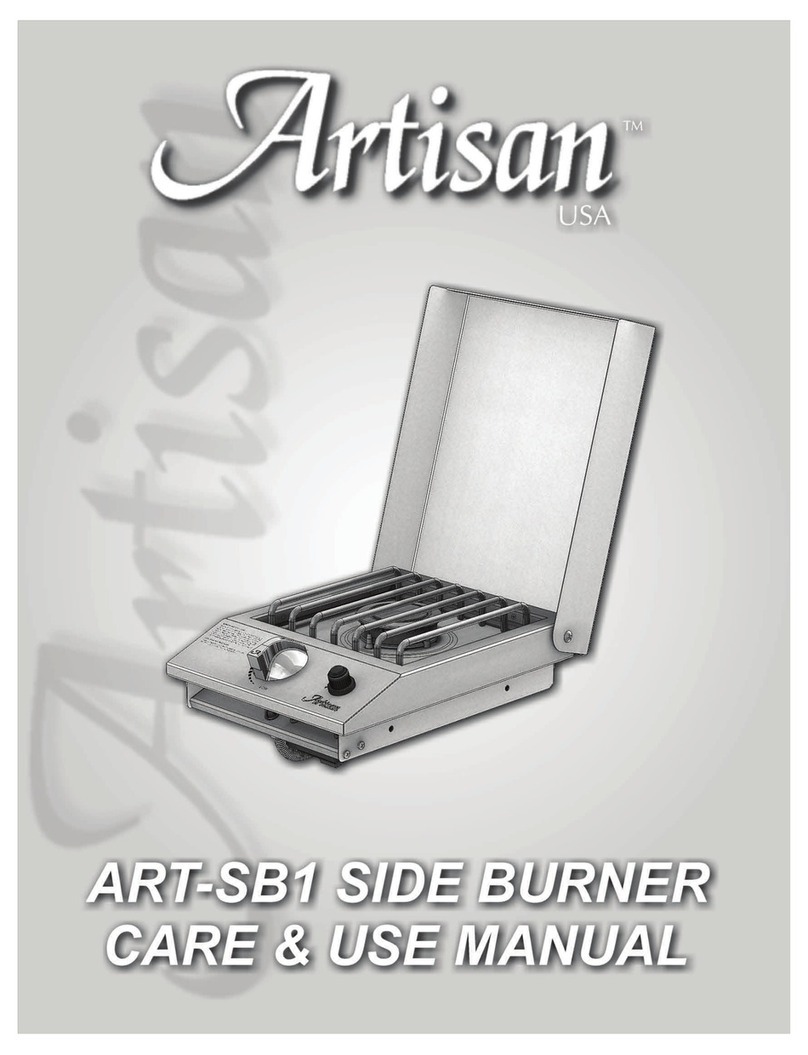
2
It is important that the installation of
the oil burner, piping and fittings, safety devices,
controls, electrical wiring and equipment be
done in accordance with national and/or local
regulations of the authorities having jurisdiction
over such installation.
Assembling the Burner (TWO-PAK)
1. Install air tuber assembly in housing using set
screws provided.
2. Install and tighten the proper nozzles. Be careful
not to damage the electrode insulators or to bend
the wires.
3. Check the electrode setting specified as follows:
1⁄8inch, 5⁄16 inch above the nozzle centerline and
¼ inch ahead of the nozzle tips. See Fig 1.
4. Swing open the ignitor assembly and slide the noz-
zle line assembly into the air tube.
5. Place the nozzle line yoke in the groove in the ad-
justing screw.
6. Fasten the high tension leads to the ignitor termi-
nals.
7. Swing the ignitor assembly to the closed position
and fasten.
8. Connect the flared fitting on the copper oil line to
the nozzle line and tighten.
About Combustion Chambers
The model 601CRD operates with superior efficiency
and cleanliness in properly designed refractory-type
combustion chambers. Very wide tolerance to burner
adjustments and other variables is found when these
chambers are used. Noise levels are also reduced.
Table 1, page 3 shows the recommended minimum
inside dimensions for refractory brick, refractory pre-
cast and pre-formed refractory fiber chambers. Due to
their quick warm-up properties, the lightweight insulat-
ing-type materials are slightly preferable although these
burners show less dependence upon refractory tem-
perature than previous models. Refractory materials in
boilers and furnaces should be capable of withstanding
2600°F (1427°C) or higher.
The notes accompanying Table 1 provides further de-
tails relative to variations in dimensions and geometry.
Refer to Fig. 3, page 3.
Firing Boilers without Refractory
Chambers
Depending upon the geometry of the combustion
space some units perform better than others without
refractory. When the back wall of the unit coincides
approximately with the end of the flame, a target of
refractory material is essential. Zero smoke readings
are made easier if a refractory fiber “rug” or fill material
is used on the base under the flame.
Table 1, page 3, together with its footnotes, gives
the essential dimensions and information needed to
provide conditions for satisfactory operation without
complete chambers. Refer to Figs. 4 and 5, page 3.
Installing the Burner:
Flange Mounted
1. Measure, in the burner opening, the distance from
the inside of the combustion chamber to the outside
of the mounting plate to find the insertion length of
air tube needed. Position flange on air tube at point
from end of burner corresponding to the measure-
ment. Tighten set screws to anchor flange. The
flange is now located so that the end of the burner
will be flush, or almost flush, with the inside of the
combustion chamber. See Fig. 3 (side view) page 3,
and Fig. 6, page 3.
2. Slide the end of the air tube into the opening and
secure the flange to the front plate.
Installing The Burner:
Pedestal Mounted
1. Adjust the pedestal so that the height of the air tube
matches the’ location of the burner opening.
2. Slide the end of the air tube into the opening so that
it is flush or nearly flush with the inside of the com-
bustion chamber. See Fig. 7.
3. From the outside of the unit, seal the space around
the air tube with refractory cement or equivalent.
Fig. 1
Electrode
Settings
